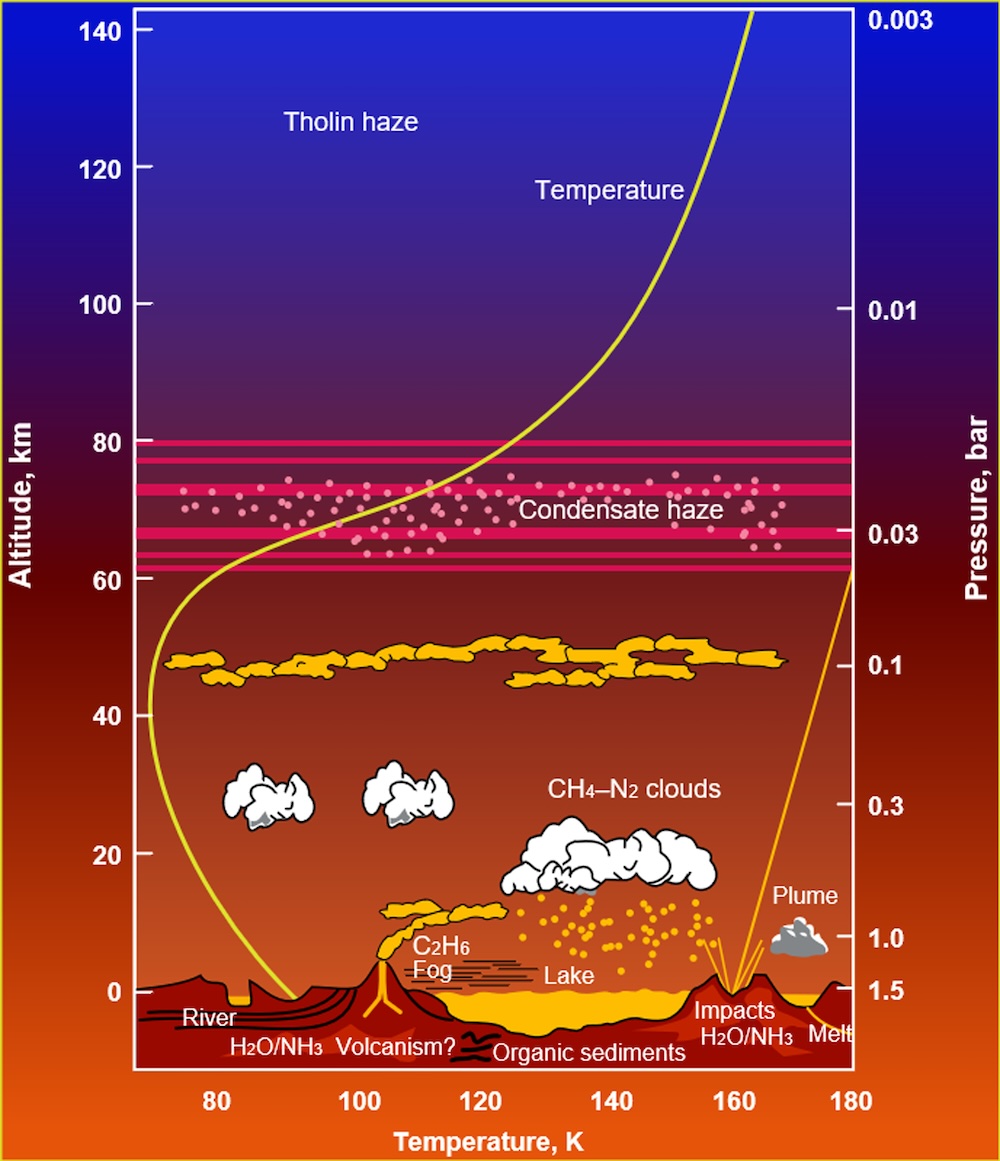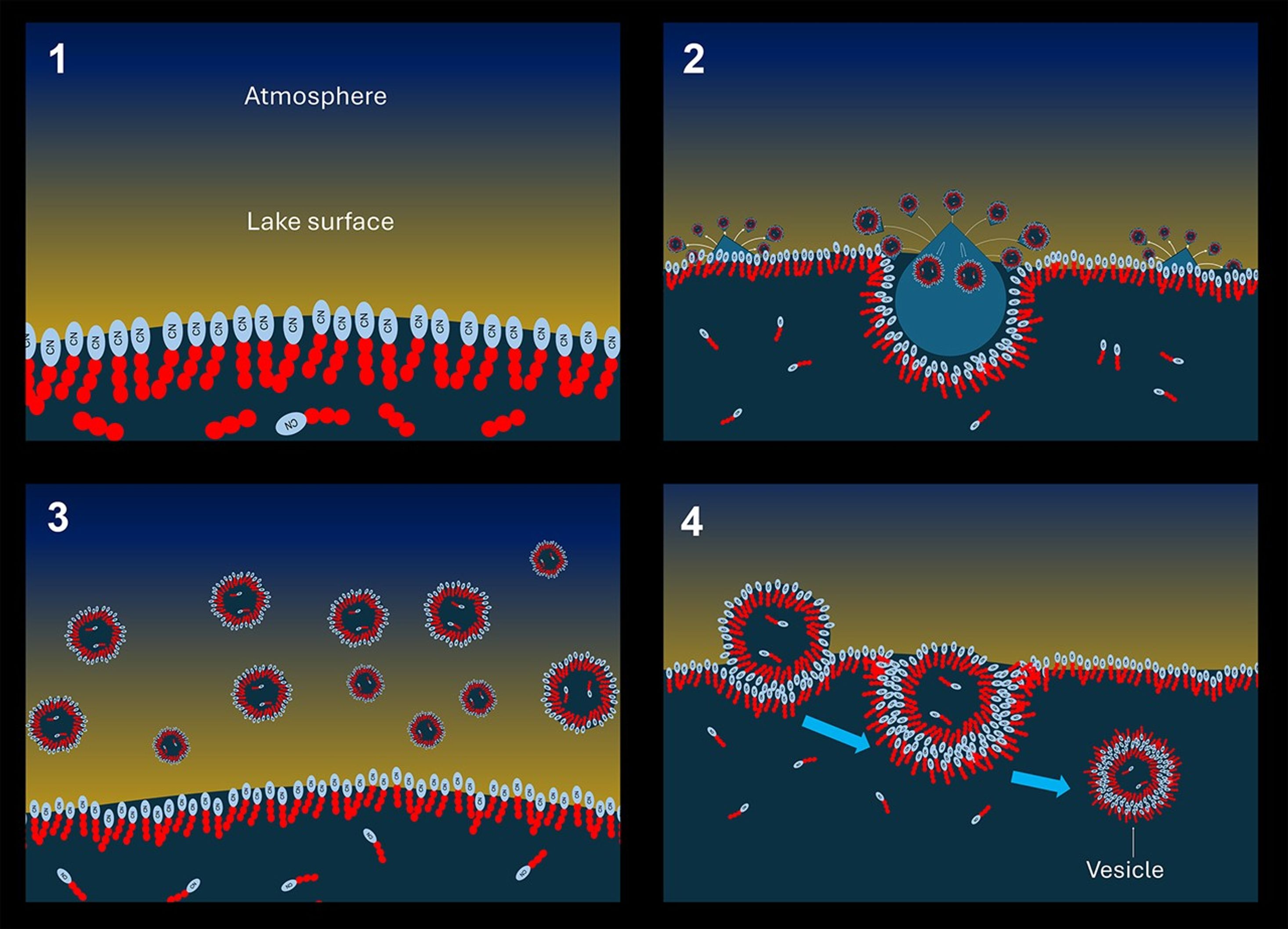When NASA's upcoming Dragonfly probe skims the lakes of Saturn's moon Titan, it may encounter a froth akin to Earth's first signs of life, a new study suggests.
Titan is strikingly similar to Earth in some respects. Like the planet we call home, its surface is covered with large lakes and seas of liquid. And, much like the water cycle on Earth, Titan's liquids – formed of hydrocarbons like methane and ethane – cycle between sky and shore, evaporating to form clouds and falling as rain.
The water cycle is the circulatory system of life on Earth, and scientists suspect that similar processes on Titan could help life find its form there, too.
Related: Titan Could Have An Alien Biosphere – But It Might Be Dog-Sized

A new study in the International Journal of Astrobiology explores the possibility that proto-cell structures called vesicles could form on Titan. These simple bubbles of fatty molecules contain an inner pocket of goop surrounded by a membrane, similar to a cell.
"The existence of any vesicles on Titan would demonstrate an increase in order and complexity, which are conditions necessary for the origin of life," explains planetary scientist Conor Nixon of NASA's Goddard Space Flight Center.
"We're excited about these new ideas because they can open up new directions in Titan research and may change how we search for life on Titan in the future."
Nixon and his colleague Christian Mayer, a physical chemist from the University of Duisburg-Essen in Germany, built on existing theories about how on Earth inorganic matter sprang to life in the dynamic spray of splashes and storms.
The vesicles, Nixon and Mayer suggest, could form out of a complex process only possible on worlds with liquid cycling.
On Titan, it would all start with a methane downpour that carries molecules from the atmosphere to a lake's surface. These molecules, called amphiphiles, have one polar end that attracts liquids, and one non-polar end that attracts fats.
"Regarding amphiphilic compounds, the recent Cassini mission revealed the presence of organic nitrile. Such compounds… are basically amphiphilic and have the capability to self-aggregate in non-polar environments," Nixon and Mayer write.
These molecules could aggregate to form a layer covering the surface of the lake. Then, when more droplets of liquid splash on this layer, they become coated with it before bouncing back into the air, forming a mist of enclosed droplets.
A second dunk in the lake seals the deal: to become stable, vesicles need a double layer of amphiphiles, a bit like sealing two layers of velcro together.
Intriguingly, a two-layered membrane such as this is a crucial part of a biological cell.
Once double-dipped, the vesicles face a final test, something verging on biological evolution.

"Stable vesicles will accumulate over time, and so will the corresponding stabilizing amphiphiles that are temporarily protected from decomposition," Nixon and Mayer write.
"In a long-term compositional selection process, the most stable vesicles will proliferate, while less stable ones form dead ends… This leads to an evolution process leading to increasing complexity and functionality."
If this process is happening on Titan, it could have major implications for how life arises from non-living matter.
To confirm the hypothesis, scientists could use a laser, light scattering analysis and surface-enhanced Raman spectroscopy to look for amphiphiles drifting around in Titan's atmosphere, as an indication of the planet's potential for harboring life.
Sadly, NASA's upcoming Dragonfly mission, set to arrive in 2034, won't be carrying the necessary instruments to detect vesicles. But it will conduct chemical analysis to see if complex chemistry is or has been occurring, which could reveal whether life is common if given the right environment, or if Earth just got lucky.
The new research was published in International Journal of Astrobiology.
